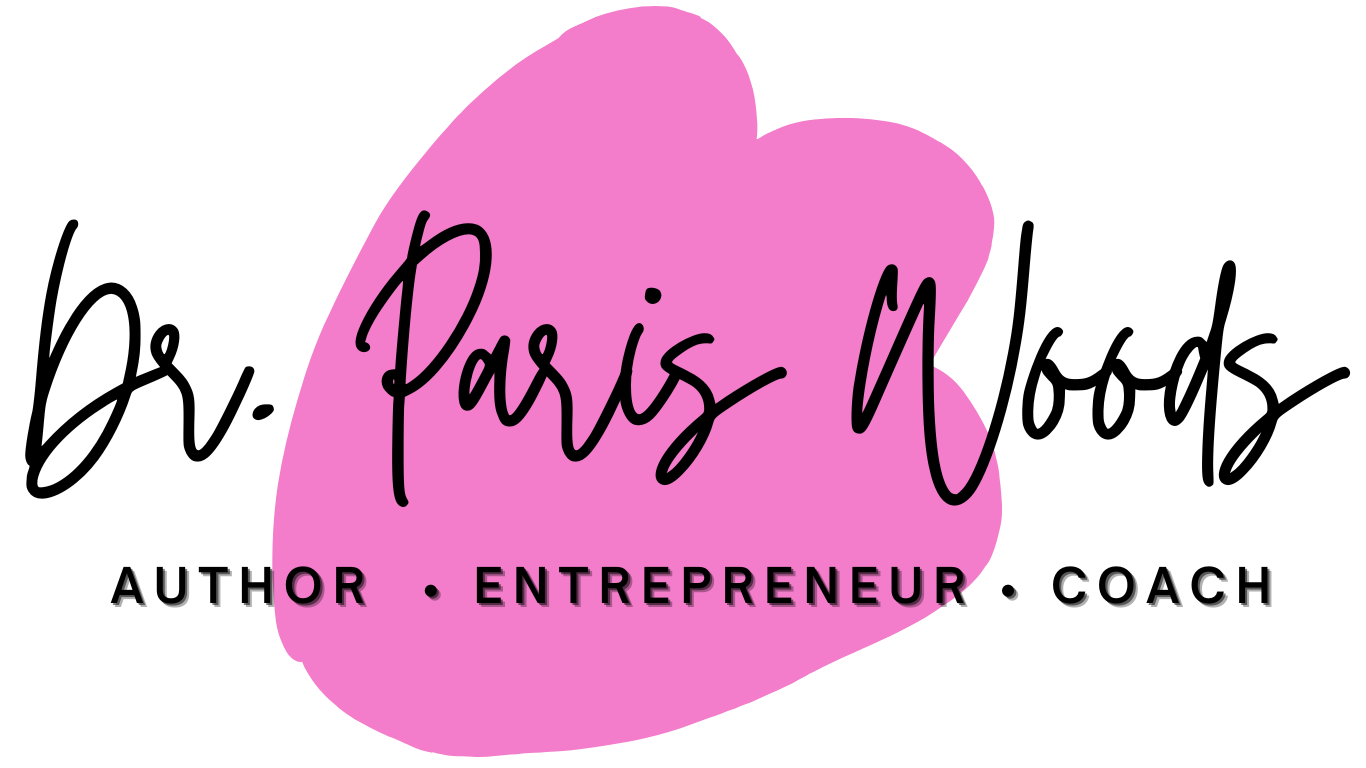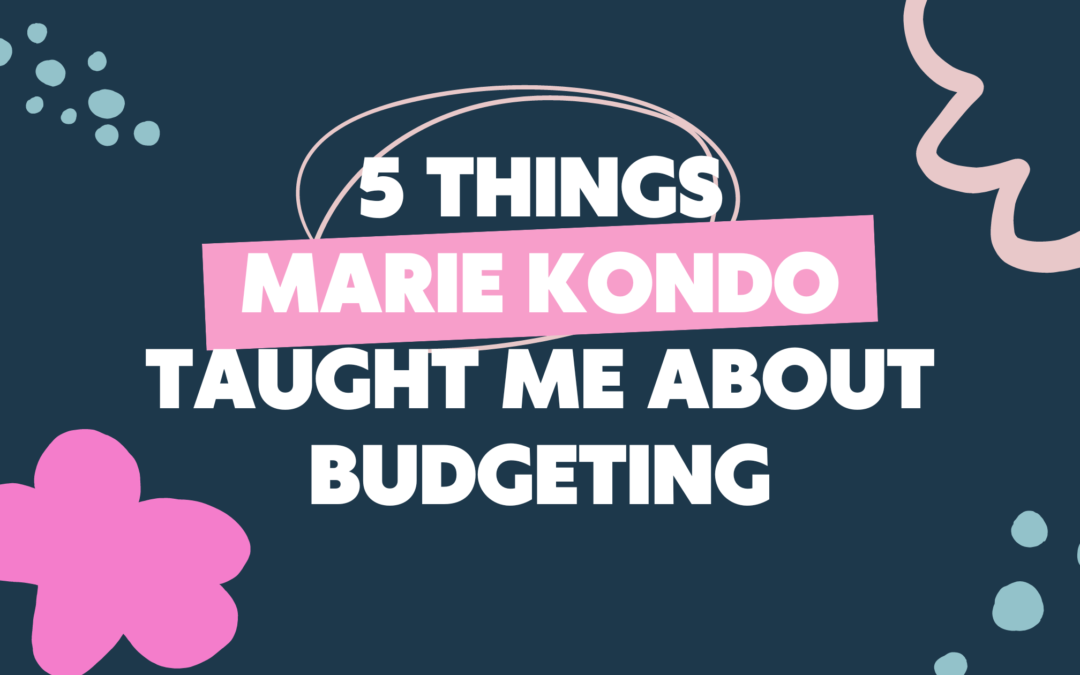Today we are talking about what Marie Kondo, author of The Life-Changing Magic of Tidying Up (one of my favorite books), taught me about budgeting.
You may be familiar with Marie Kondo because of her book or because of her television show, Tidying Up with Marie Kondo. She’s known for her method for tidying up our houses–and our lives.
On her show, she gets people to pull all of their junk out of the closets and dresser drawers, toss it into a big pile in the middle of the room, and then spend time going through piece by piece and deciding what specific, important things they want to keep.
Today I want to share with you some of my favorite lessons from Marie that I think are so relevant to the budgeting process.
#1: “Make tidying a special event, and not a daily chore.”
In Marie’s book and her television show, she invites people to pull all of their possessions out of the nooks and crannies of their homes and makes a big to-do out of going through each item piece by piece and deciding which things folks are going to keep and which things folks are going to discard.
According to Marie, it doesn’t make sense to try to tidy up bit by bit along the way. You never finish the job. Instead, make it an event.
When it comes to budgeting, I teach folks to take the time to set up a values-aligned budget. And then to set up systems to automate that budget, so that their spending is aligned with their values on a regular and consistent basis.
For those of us who don’t love budgeting, it makes sense to designate time to sit down, look at all of your numbers, and make some decisions.
Once you set up your budget that aligns with your values, you set up systems so that you set it and forget it. It’s not something that you have to return to again and again and again (unless you want to).
#2: “Before you start, visualize your destination.”
Budgeting for the sake of budgeting is boring, right? But budgeting because you have a goal in mind–now that’s a little bit different.
Before you set out to make a budget, I first want you to create a vision for your life. What are you trying to achieve financially? What goals can your budget help you accomplish?
Once you have the broader vision in mind, then you can set up a budget with that specific goal as your destination.
Your budget now serves a larger, more interesting, if not inspiring purpose in your life.
#3: “Reduce until you reach the point where something clicks.”
Marie Kondo does a great job of getting people to let go of lots of clutter in their lives. If something isn’t serving you, you’ve got to let it go.
This applies to our budgets as well. How many sneaky little expenses have made their way into our budgets without our realizing it?
This could be things like those subscriptions that you forgot to cancel that are starting to add up, or the mindless purchases that you make; the little candy bar at the checkout–things that you buy without even thinking about it.
When you’re setting up your budget, to accelerate your progress toward your goals, you’re going to have to clear out all the clutter.
Things that simply don’t belong in your budget. Things that are not aligned with your personal values, that are getting in the way of you reaching your goals as soon as possible.
Keep the things you love the most and kick everything else to the curb.
This purging process can be harder for some of us than others. I want to share with you an excerpt from Marie’s book that I find especially relevant for the things that are so difficult to let go. This is from page 61:
“When you come across something that you cannot part with, think carefully about its true purpose in your life. You’ll be surprised at how many of the things you possess have already fulfilled their role. By acknowledging their contribution and letting them go with gratitude, you will be able to truly put the things you own and your life in order. In the end, all that will remain are the things that you truly treasure.”
Don’t you love that?
I find this especially true when it comes to that 4 letter word we all hate: debt.
Make a list of all of your debts. Instead of feeling guilty about having accumulated all that debt, why not replace your guilt with gratitude?
Thank each debt for what it’s taught you or for what it brought into your life. It has served its purpose and now you’re ready to let it go.
#4: “Follow your intuition and all will be well.”
I remember in my younger years looking for budget templates, wanting someone else to tell me what was an appropriate amount to spend on different things.
What I have learned as I’ve gotten older is that my intuition, my personal values, are the best guide I can have for setting up my own personal budget.
Let your intuition guide your budgeting process. Feel free to spend on the things that are most important to you. And feel free to get rid of the things that are not.
Who cares what your friends and neighbors are doing with their money? Your budget is a reflection of you.
#5: “Designate a place for each thing.”
Isn’t that what a budget is?
You decide how much you’re going to spend on each line item. And then the most important step–where are you going to put that money before you spend it?
I have found it helpful to have separate accounts based on different categories of spending.
Just like you put your socks in the sock drawer and hang your dresses in the closet, you might find that all of your money doesn’t belong in the same account.
Maybe you would benefit from a separate account for bills, an account for savings, and an account for your everyday spending. Once everything has its place, it’s hard to get things mixed up.
So the next time you watch Marie’s show, or if you get a chance to pick up her book at the bookstore, I want you to read it with your budgeting hat on.
I shared with you a few of the things I learned from Marie. I’m curious what you take away from her work.
And let me know if these lessons in tidying up help you with your own budgeting process.

